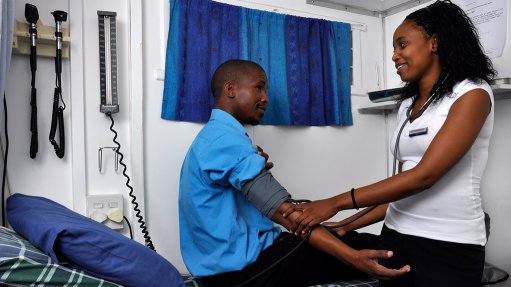
UNINTERRUPTED TREATMENT Hydrogen fuel cell technology assists in providing continuous healthcare for tuberculosis patients
A pilot project designed to provide alternative power to tuberculosis (TB) patients at the Windsor East Clinic in Randburg, Johannesburg, will ensure uninterrupted treatment for TB patients during power outages and load-shedding.
The Department of Science and Technology (DST) and the City of Johannesburg have partnered with the private sector to use hydrogen fuel cell technology (HFCT) to provide standby power to the clinic.
Mainly treating patients infected with TB, the clinic has been experiencing difficulties with preserving the TB vaccines, which are extremely sensitive to varying temperatures, in its pharmacy refrigerators, owing to load-shedding.
The vaccine can become ineffective, putting patients’ lives at risk if it is not kept at the correct temperature.
HFCT standby power solutions are efficient and have the benefit of being reliable, safe and quiet, ensuring a nonintrusive standby power solution with the potential to become a primary power solution.
“This project addresses four critical issues, namely, access to energy, security of power supply, affordability and the protection of the environment, which are central to the DST’s research into alternative energy solutions,” said deputy director-general for technology innovation at the DST Mmboneni Muofhe, who spoke at the launch of the project, which took place earlier this year.
He further highlighted key challenges hindering the clinic’s efforts to improve the quality of life of patients, such as power supply challenges.
Private-sector partners partnering with the DST on this project comprise Air Products SA, which supplied the hydrogen; Clean Energy Investment, which is implementing the project; Gridline Construction, which supplied the infrastructure; and Powertech IST Industrial, which provided the fuel cells.
Clean Energy Investment and Air Products SA completed a feasibility assessment of the hydrogen distribution and safe storage to ensure compliance with international codes and standards. Installation was completed by April and the HFCT has already generated 51 hours of reliable standby power for the clinic.
Clean Energy Investments CEO Gavin Coetzer noted that the provision of hydrogen-based technologies to the clinic demonstrated the capabilities and expertise of all the partnering organisations.
“It is always exciting to work on a public–private partnership project, where like-minded individuals get together to successfully implement a project that addresses the immediate needs of the community,” said Coetzer.
Air Products SA MD Mike Hellyar highlighted that the energy efficiency and improved healthcare delivery enabled by hydrogen fuel cells encapsulated the commitment to remain at the forefront of continuously improving innovation and technology in South Africa.
“We engage in such initiatives not only for the benefit of the community as part of our corporate social investment drive, but also for the benefit of other industry sectors and commercially driven initiatives,” he added.
More About Hydrogen Fuel Cells
Hydrogen is the simplest element. An atom of hydrogen comprises only one proton and one electron. It is also the most plentiful element in the universe. Despite its simplicity and abundance, hydrogen does not occur naturally as a gas on the earth; it is always combined with other elements. Water, for example, is a combination of hydrogen and oxygen.
Most fuel cells operate silently, compared with internal combustion engines. They are, therefore, ideally suited for use in buildings, such as hospitals.
Fuel cells do not need conventional fuels, such as oil or gas, and can therefore reduce economic dependence on oil-producing countries, creating greater energy security for the user. Since hydrogen can be produced anywhere where there is water and a power source, fuel generation can be distributed and does not have to be grid-dependent.